See other continents and never leave New Brunswick
Don't let border restrictions stop you from visiting interesting geological deposits from South America or Africa.
You can do that right here in New Brunswick, explains Sandra Barr, a professor in the Department of Earth and Environmental Science at Acadia University in Wolfville, N.S.
She says New Brunswick is a bit of a "collage of bits and pieces."
Those pieces have come from South America, Africa, and perhaps even Europe, said Barr.
"And they're all now joined together and united by common history in the latter part of geological time."
Barr said it's one of the reasons that New Brunswick is so geologically significant. And to help people find some of the province's most interesting sites, she has teamed up with Martha Hickman Hild to put together a field guide called Geology of New Brunswick & Prince Edward Island: Touring through time at 44 scenic sites.
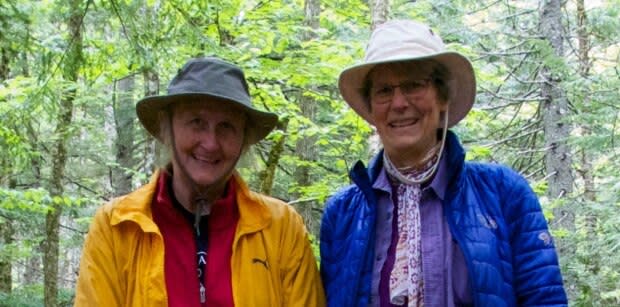
The guide includes pictures, maps, GPS waypoints and directions to help users find the sites. It also includes interesting facts about the rocks.
Barr said the locations were selected because they were geologically significant and "accessible, safe and beautiful."
"It's just plain fun to go out and look at rocks. There's no reason why that should be reserved for just a few people," said Hickman Hild.
She said she's always been interested in rocks and still has the very first one she brought home when she was three or four years old.
"I've just always been attracted to them," she explained, "and I guess what really captured my imagination was the feeling that if you understand the rocks, you can stand in a place and imagine, not just the world that you're presently in, but just a whole series of worlds that are kind of stored and filed away in the rocks, and there's something about that process of imagining all those different worlds that really appeals to me."
To understand the significance of New Brunswick's geology, Hickman Hild said it's important to understand how the earth has changed over its 4.5-billion-year lifespan.
At one time, it was all one land mass. Then, the land divided into separate continents — although they looked nothing like today's continents.
Over billions of years, tectonic plates continually shifted and collided, bringing land masses together and pulling them apart.
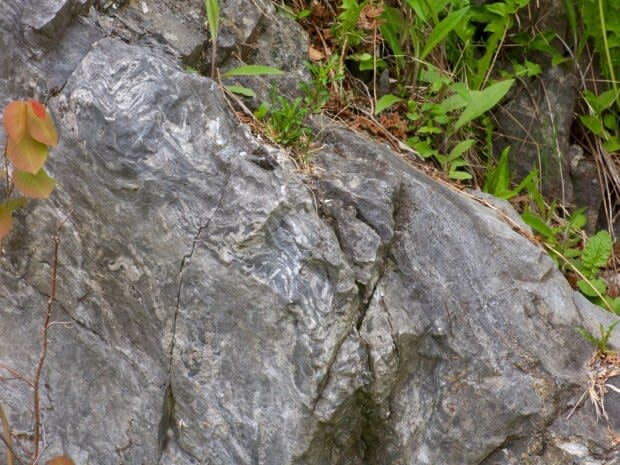
At one time, today's Maritimes would have been connected to land that is now part of South America and Africa, explained Hickman Hild.
Evidence of that is easy to find in Saint John, she said. That's why Rockwood Park is so geologically significant. It has two distinctly different rocks — a volcanic rock which originated in Avalonia, which was a microcontinent in the Paleozoic era, and a sedimentary rock from Ganderia, which broke off the supercontinent Gondwana about 570 million years ago.
Barr said it's "one of the very few — and maybe the only place — where you can see those rocks in contact with one another."
What used to be separate continents, can now be seen on either side of the road that leads through the Saint John park, said Hickman Hild.
"There was once, perhaps, many hundreds of kilometres of ocean separating these two areas of rock, and they came together," she explained.
"So they collided and then they slid past each other, and things didn't really settle down until sometime during the Carboniferous [period], so like 350 or more million years ago."
White Head Island
Barr said the Grand Manan area is one of the "most enigmatic places" in Atlantic Canada.
There are really young rocks — those would be the dark cliffs that would have formed during the opening of the present Atlantic Ocean, she explained.
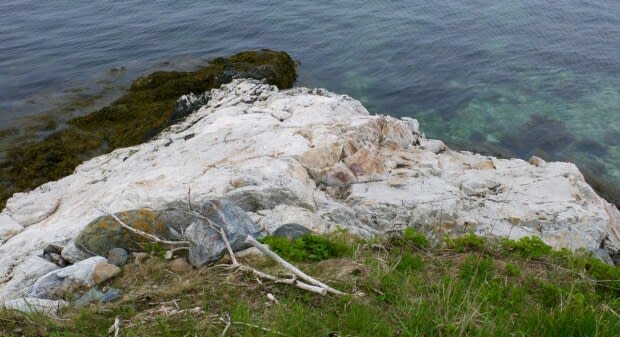
"But there are also really old rocks there — rocks with ages that go back, not just one billion, but two billion years. And we don't yet know how those fit into the story and all these rocks are incredibly visible if you go to White Head on White Head Island, you can stand on those possibly two billion year old rocks."
Fundy Trail
The Fundy Trail boasts the evidence of a "super volcano," said Hickman Hild.
Evidence of the volcanic activity can be found all along the Fundy Trail Parkway and beyond.

"About 550 million years ago, there appears to have been a very active, very productive volcano that produced ... many, many cubic kilometres of this volcanic ash."
Hickman Hild said it wouldn't have looked like the images of red lava pouring out of the top of an open volcano. It would have erupted more like Mount St. Helens.
"That's where the lava is so stiff and thick, it can't really flow, and so the pressure just builds up and builds up and then it erupts explosively, with huge, high plumes that go up into the sky."
A "vapour of molten rock" would have rained down over a large section of the coastline, said Hickman Hild.
Harvey
Harvey is the site of another dramatic volcanic eruption. About 360 million years ago, a volcano in Mount Pleasant — approximately 35 km away — blew its top in a very dramatic fashion and "the region was enveloped in a cloud of fiery plasma," explained Hickman Hild.
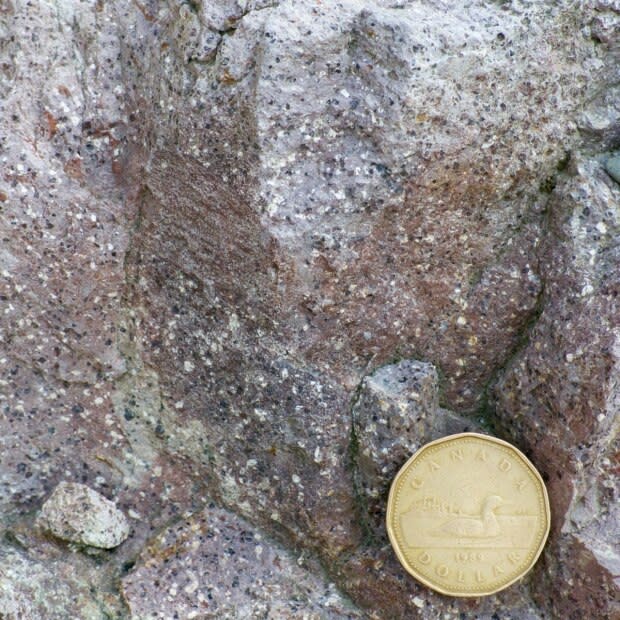
What resulted is a deposit of almost ceramic-looking rocks with polka dots — 35 km away.
"How they got there is jaw-dropping," said Hickman Hild.
Atlas Park
The park located in Pointe-Verte on Chaleur Bay is a picturesque place for boating and scuba diving, but it's also the site of evidence of a 460-million-year-old ocean floor, said Hickman Hild.
She said it's extremely rare to find remnants of the ocean that are that old — even the world's oceans today don't have evidence that old.
"If you looked in the oceans today, you would not be able to find any 460-million-year-old rocks on the ocean floor because new ocean floor is constantly being produced, and all old ocean floor is constantly being destroyed by being pushed under the continents. That's how plate tectonics works."
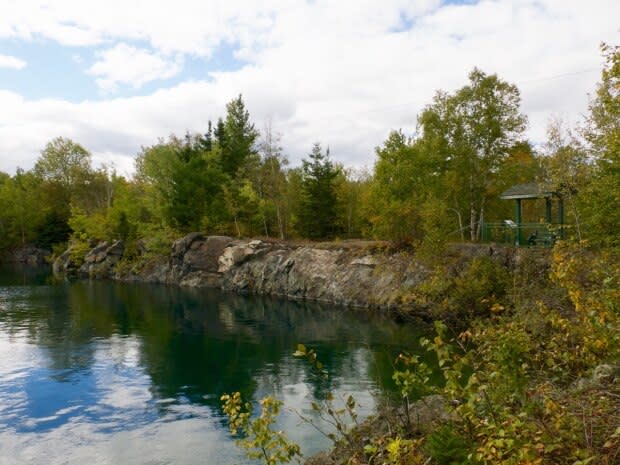
As land masses shift, oceans are normally pushed under continents and almost never on top of them, she said. That's why it's so rare to find evidence of ocean floors anywhere on the land — no matter what age.
As tectonic plates continue to shift, oceans adjust accordingly," said Hickman Hild.
"The Pacific Ocean is being essentially destroyed at the expense of the Atlantic Ocean … right now, the Atlantic Ocean is growing. It's pushing North America and Europe, South America and Africa farther and farther apart from each other.
"Meanwhile, over on the other side of the continent … the Pacific Ocean has got nowhere to go. It's going under the continents and melting and forming volcanoes and earthquakes."

